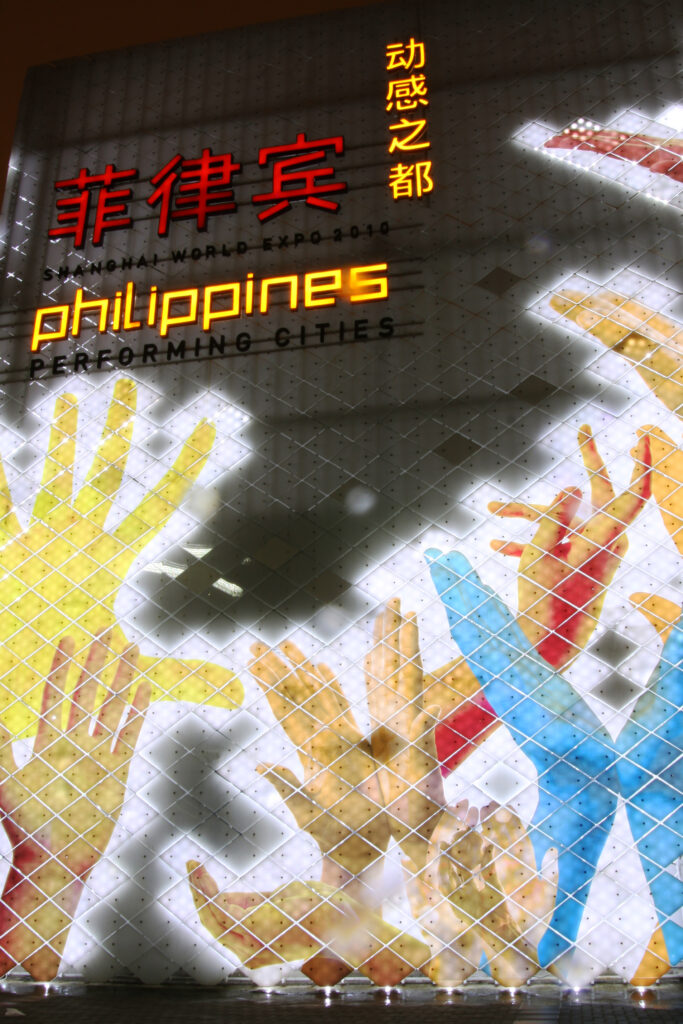June 26, 2010
2010 Asian odyssey: Shanghai World Expo, Kuala Lumpur, and more! (Part 8)
By Simon J. Lau
Here are the pictures I promised from my visit to the World Expo! This was actually my second time there. The first time, it was raining, so I didn’t bring my camera. Ironically, it was raining even more this time! But since my time in Shanghai is almost up and the weather wasn’t going to improve, I decided to seize the opportunity to photograph the Expo. It was challenging, but I’m pleased with the result. Without further ado, here’s my World Expo series!

This is the central exhibition hall for the China Pavilion, often referred to as the “Crown of The East.” Its distinctive roof is made of traditional dougong (or brackets), dating back more than 2,000 years. Though I didn’t have time to explore the exhibit, I’ve heard it focuses on recent rural to urban migration and China’s efforts to manage its carbon footprint. The pavilion is expansive and arguably one of the largest among all the pavilions.

Ah, the motherland! Despite my love for the Philippines and the memories from Quezon City, I found the Philippines pavilion to be a huge disappointment. It barely showcased more than a couple of guitars and a few traditional costumes. I had hoped that they would seize the opportunity to highlight the country’s recent industrial developments and its rich history.
However, since they didn’t, I’ll take a moment to do it for them. The Philippines was annexed from Spain by the Americans in 1898, becoming a US Commonwealth territory in 1935 and gaining independence in 1946. After World War II, it had the second-largest economy in Asia, expected by many economists to surpass Japan’s. This growth was fueled by a strong economy and close ties with the US. Unfortunately, corruption and government mismanagement have hindered progress since then. Sometimes, I wonder how things would be different if the Philippines had remained a US Commonwealth territory or become a full-fledged state.

Venezuela’s pavilion wasn’t particularly memorable, but what did leave an impression on me was the open-air courtyard with hammocks and small theater areas. Not far from that courtyard was this large glass sculpture hanging from the ceiling. As you can see from the photograph above, it’s a bit mesmerizing and forms a natural frame for the picture.

España! This was a really popular pavilion, and regardless of the time, there was always a line. You could also see from the design that the Spanish put a great deal of care into creating their pavilion. The shell of the Spanish pavilion makes ingenious use of wicker panels (a material of wood straws woven together) to create this wall with an almost-fluid appearance. Also, because it’s flammable, there were signs everywhere asking people not to smoke!

Mexico’s pavilion was quite enjoyable! While most of it was located underground, the above-ground portion was particularly fascinating. According to the Expo website, it featured a Kite Forest with colorful kites and green grass, symbolizing Mexico’s vision for future urban life focused on ecology, environmental protection, and peace. The exterior grass slope created a spacious green public area, embodying these ideals. Although I didn’t find the underground exhibit as captivating, I truly appreciated the vibrant display above ground. It provided a refreshing contrast amidst the towering pavilions nearby.

Chile! This was, by far, my favorite pavilion. The design team for the pavilion did a great job weaving together Chilean culture with Chile’s goals of building greener cities and improving the country’s standard of living. For example, this is a picture of a typical Chilean home that someone attached upside down to the ceiling of a room in the exhibit. I thought it was a wonderfully creative way to introduce a slice of daily life to audiences. There were a lot of interesting details, including a TV playing Chilean TV shows, books, magazines, and other daily items on “display” throughout the home.

This photograph was taken at the Thailand Pavilion. The Thais really went out of their way to develop a guided “tour,” which was a much different approach from the other pavilions I saw. For instance, instead of just walking into the pavilion, you were led through three separate video showings. This picture was taken at the first showing where they displayed videos of modern Thailand. After watching this video, we were led to a second showing where a robot narrated another video about Thai history. Finally, we were led to a room showing a 3D video, similar to something you would find at Disneyland.
It was a fun pavilion, and I appreciated the variation in their approach. Yet, at the same time, I would have liked to explore the pavilion at my own pace. Overall though, the videos were great and definitely worth watching!

Finally, the photograph above was taken at the entrance/exit at Gate 1. The surface of the roof you see in this photograph was actually a dynamic display. Periodically, different portions of the image embedded into the roof would light up. After spending some time watching it, I decided it would be cool to set up a long exposure shot to capture what the full image would look like if all the different portions lit up at once. And as a result, we see the black swirls on the purple-colored roofing.




Comments are closed.